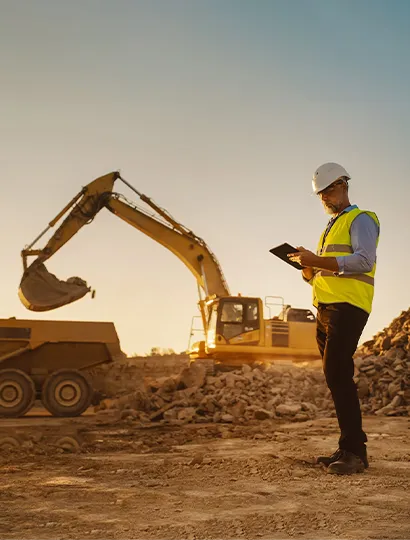Avoid your inquiry is delay response, please enter your WhatsApp/Skype along with the message, so we can contact you at the very first time.
We will reply you within 24 hours. If for urgent case, please add WhatsApp/WeChat: +86 188 0000 0000,. Or call 0086-535-2422021 directly.
*We respect your confidentiality and all information are protected. We will only use your information to respond to your inquiry and will never send unsolicited emails or promotional messages.
If you’re looking for a machine that handles rough terrain, tight spaces, and heavy lifting, a compact track loader might be your answer.
A compact track loader is a versatile construction machine equipped with rubber tracks that allow it to operate on soft, uneven, or muddy ground while performing tasks like lifting, grading, and digging.

Many people confuse compact track loaders with skid steers or small bulldozers. But once you look closely, you’ll see why this machine stands out. It’s designed for mobility, flexibility, and efficiency—especially where wheels can’t go.

You might think a compact track loader burns out quickly under stress. But the truth is, with care, it keeps going strong.
A well-maintained compact track loader can last between 2,000 and 5,000 operating hours, depending on usage, conditions, and maintenance routines.
There are a few key things that determine how long a compact track loader will last:
| Factor | Impact on Lifespan |
|---|---|
| Maintenance frequency | Regular servicing extends lifespan |
| Operator habits | Gentle use reduces wear and tear |
| Work conditions | Muddy, rocky terrain causes faster wear |
| Load stress | Constant heavy lifting shortens life |
| Brand & build quality | Premium machines last longer |
I’ve used machines that lasted over 4,000 hours and were still strong. But I followed strict maintenance, replaced hydraulic fluids regularly, and avoided overloading.
Clean the undercarriage every day, especially if working in wet or sandy areas. Debris builds up fast and grinds the components.
Don’t skip oil changes or delay filter replacements. They seem minor but save you from bigger problems later.
Smooth operation is everything. Jerky movements and rough handling shorten the loader’s life faster than anything else.

It depends on the land, but each machine has its own strengths and limits.
For large-scale, heavy-duty land clearing, a bulldozer is more efficient. For smaller or mixed-terrain areas, a skid steer or compact track loader offers more control and versatility.
| Machine | Strengths | Weaknesses |
|---|---|---|
| Dozer | High pushing power, ideal for heavy brush | Less maneuverable, heavier, costly to move |
| Skid Steer | Maneuverable, compatible with attachments | Lower power, less effective on thick growth |
I’ve cleared thick brush on a hillside with both. The dozer did great on the open areas, but the compact track loader1 handled the tight spaces between trees better. And when I attached a forestry mulcher to the loader, it saved me hours of cleanup.
Is the area steep, rocky, or filled with trees? Go with the compact track loader. It can handle slopes and weave through tight spots.
Dozers need trailers, permits, and wide access. Skid steers fit on smaller trailers and can enter tighter job sites.
With the right tools—like brush cutters, grapples, or mulchers—a compact track loader becomes a land-clearing machine with surgical precision.
You might expect it to be slow. But with the right setup, a skid steer can surprise you.
A skid steer2 or compact track loader with the proper attachment can clear 1 to 4 acres per day, depending on vegetation density and terrain difficulty.
| Factor | Impact |
|---|---|
| Vegetation type | Dense woods slow you down |
| Attachment used | Mulchers clear faster than buckets |
| Operator experience | Skilled drivers work more efficiently |
| Ground conditions | Slopes or mud reduce productivity |
| Machine horsepower | More power equals faster clearing |
In my experience, clearing one acre of medium brush with a forestry mulcher3 takes around 3–4 hours. When vegetation is light and the terrain flat, I’ve managed nearly 4 acres in a single shift.
A dedicated forestry mulcher beats a bucket any day. It cuts, grinds, and leaves little cleanup.
Walk the area first. Mark hazards. Map your route. It cuts down wasted movement and boosts your speed.
Continuous mulching overheats some systems. Take breaks. Check hydraulic temperatures. It’s better to pace yourself than to risk downtime.
Compact track loaders are smart, flexible, and dependable tools that punch above their size on any job site.
This resource will highlight the advantages of compact track loaders, especially in tight spaces, helping you make informed equipment choices for your projects. ↩
Understanding skid steers can help you choose the right equipment for your clearing projects. ↩
Learn about forestry mulchers to enhance your land clearing efficiency and effectiveness. ↩